Ophiuchus, the Serpent Bearer, is a large ill-defined patch of the early summer sky. The main form of the constellation appears as a box with a ‘roof’, the apex marked by Rasalhague (Alpha (α) Ophiuchui) representing Ophiuchus’s head.
Close by is Rasalgethi, the head of another giant in the stars, the constellation Hercules, the Strong Man.
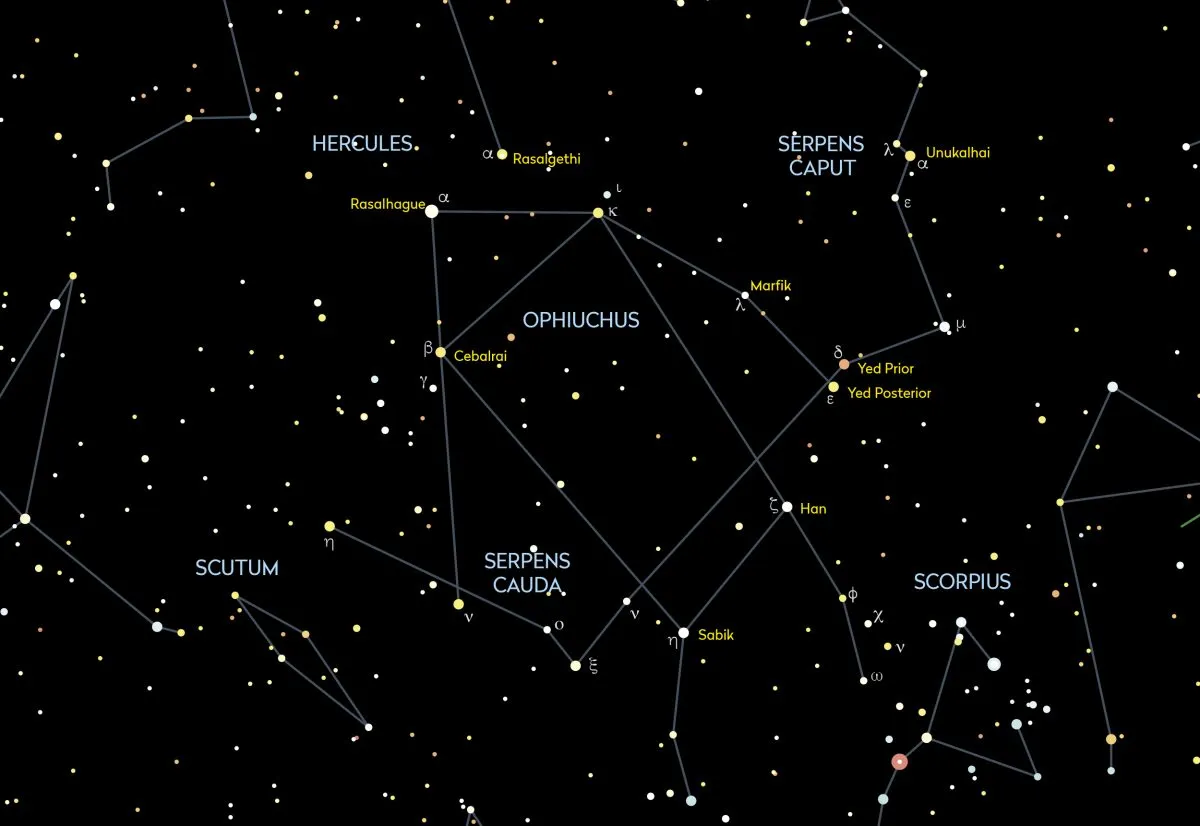
Observing star Rasalhague
Rasalhague is a binary star system, 48 lightyears from Earth. It has a faint companion, too close to its primary for amateur instruments to see.
The primary is estimated to be 2.4 times as massive as the Sun, while the secondary has about 85% of the Sun’s mass.
The orbital period is 8.62 years and at the last periastron (where both stars were at minimum separation) in 2011, they appeared separated by just 50 milli-arcseconds.
Rasalhague appears to shine at mag. +2.08 and has a spectral classification of A5 III – a giant star (the ‘III’ part) that has exhausted the hydrogen fuel at its core.
Its companion is redder, with an estimated spectral class of K5 V.
Rasalhague is a fast rotator too, spinning at 240km/s. For comparison the Sun’s rotational velocity is a rather leisurely 2km/s.
At such a speed Rasalhague is close to its break-up speed of 270 km/s and will be bulging noticeably at its equator.
An effect known as ‘gravity darkening’ will also be causing the star’s poles to be hotter than its equator. Current estimates suggest the equatorial radius is 20% larger than the polar radius.
We get to see the star almost sideways on, its rotational axis being inclined to our line of sight by around 88˚.
Rho Ophiuchi
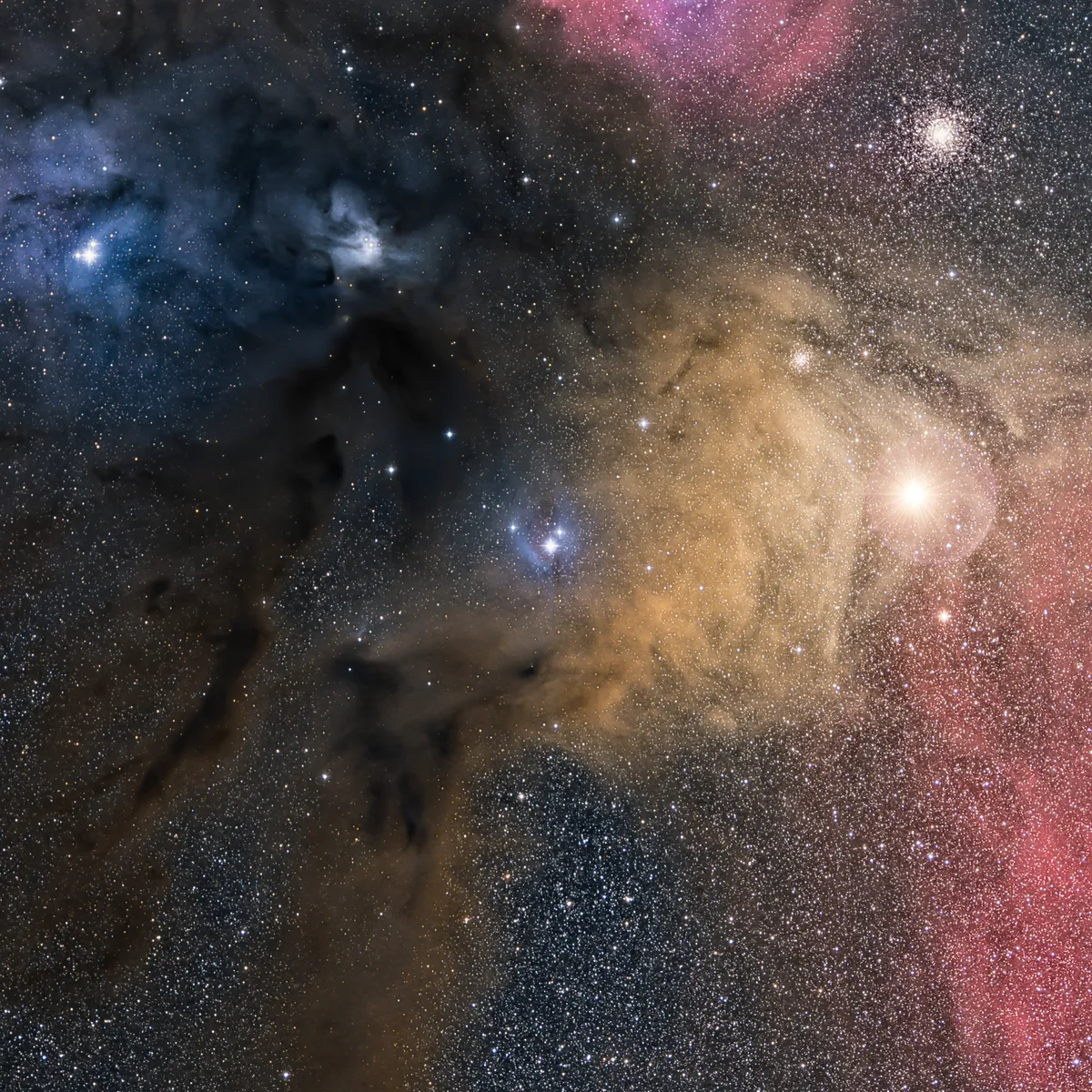
The mag. +5.0 Rho (ρ) Ophiuchi lies 3° north of the globular cluster M4. It is a component of a triple star, whose 7th magnitude companions are situated 2.5 arcminutes to the north and west, making it look like Mickey Mouse.
If the sky’s good, averted vision can help you detect a brightening of the surrounding sky: 10x50s are ideal for detecting this nebulosity.
6 deep-sky objects in Ophiuchus
Once you've found Ophichus and explored it with the naked eye, get out your telescope and see if you can observe some of its deep-sky delights. Here are some of the best deep-sky targets to see in the constellation.
To help you locate each of the targets in our tour, download our deep-sky tour of Ophiuchus chart (PDF).
1 – IC 4665
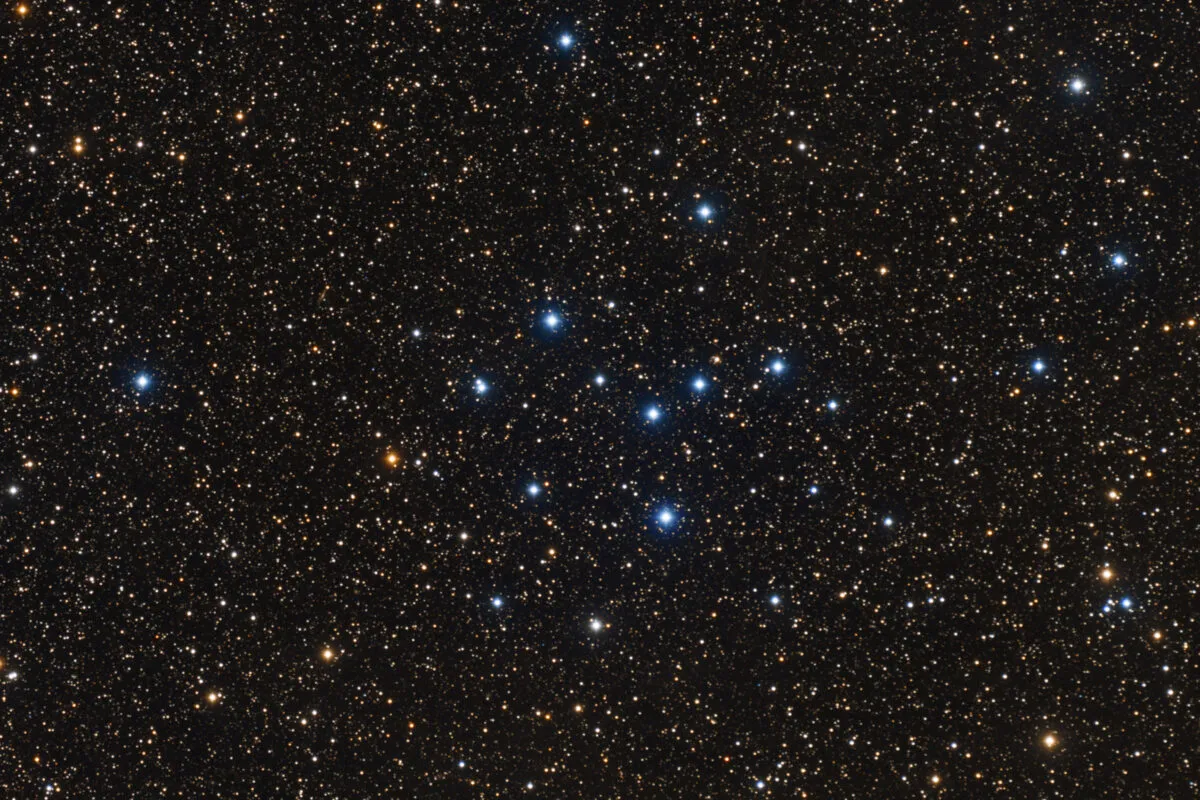
The eastern vertex of the roof marked by Rasalhague (Alpha (α) Ophiuchui), representing Ophiuchus’s head, connects with the box at (Cebalrai (Beta (β) Ophiuchi). You’ll find the large open star cluster IC 4665, 1.3˚ to the north of this star.
IC 4665 is a young and close cluster, estimated to be 40 million years old and only 1,400 lightyears away. Best viewed with a low-power eyepiece, it appears 45 arcminutes across.
2 – NGC 6426
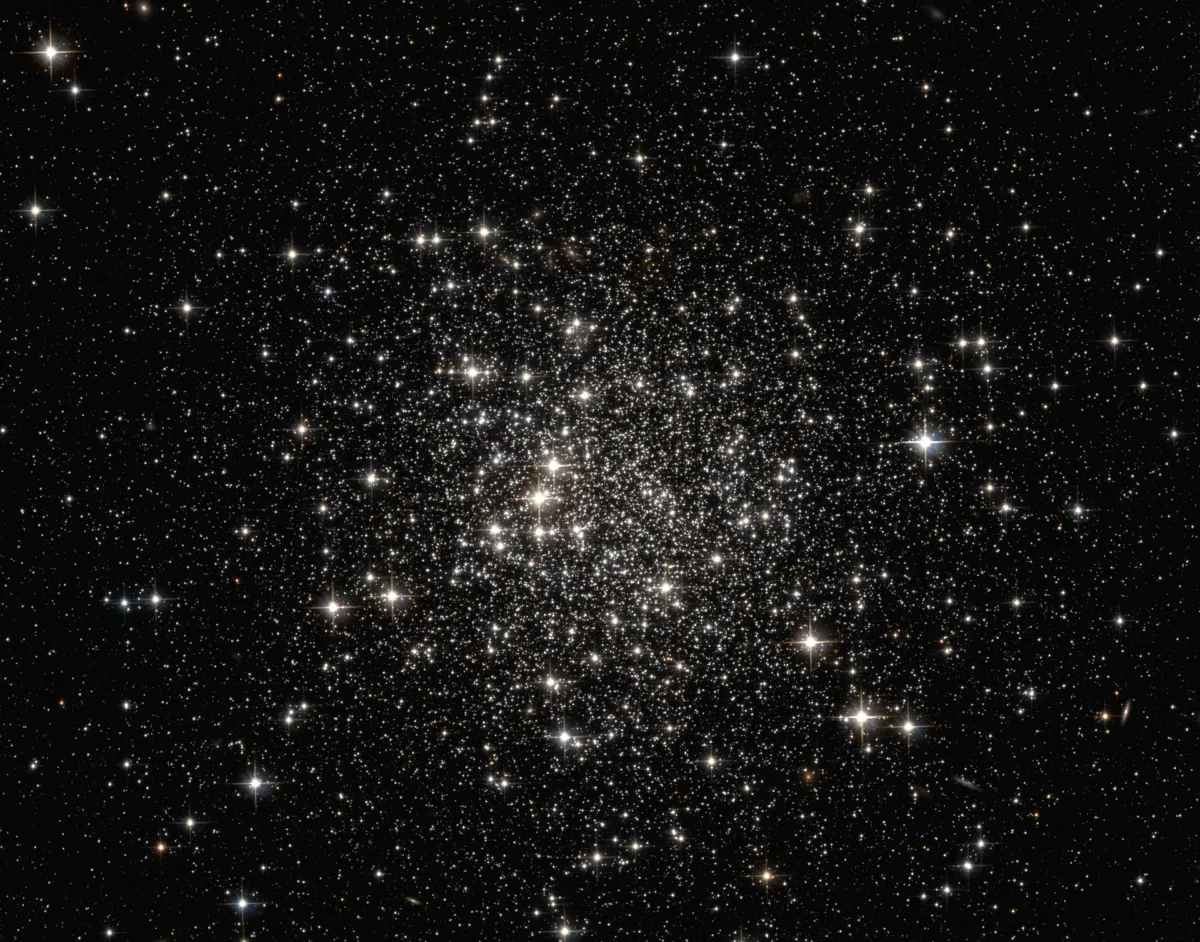
Our next target lies 1.6˚ to the south of mag. +2.8 Cebalrai. Here you’ll find the mag. +11.1 globular cluster NGC 6426. It’s more difficult to see as it’s fairly dim and quite small with a diameter of 3 arcminutes. A 250mm scope shows it as little more than a faint smudge, barely 2.5 arcminutes across.
With averted vision and high magnification it should be possible to see that the smudge is brightening towards the centre. Increasing the aperture to 300mm will show little more than this to be honest, the faint, centre-bright patch being easier to see, but not showing any stellar granularity. This globular is located at a distance of 67,200 lightyears.
3 – Collinder 350
Our next target is open cluster Collinder 350. To locate it, head 2˚ south of Cebalrai to mag. +6.2 HIP 86831. Head 0.8˚ east for mag. +3.9 Gamma (γ) Ophiuchi and 0.8˚ south-southeast to mag. +6.4 HIP 87224. This orange star is the north vertice of a right-angled triangle with mag. +7.5 HIP 87244 and mag. +6.6 HIP 86969, both also orange. Collinder 350 sits between HIP 87224 and HIP 86969.
At mag. +6.1, this is a tricky object because it’s large, sparse and sits on the Milky Way’s edge. As was the situation with IC 4665, Collinder 350 requires a low power for the best view. Go too high and you’ll be looking at stars within it, but not realising that they are part of a cluster! In total, there are 15 stars to be see.
4 – Barnard’s Star
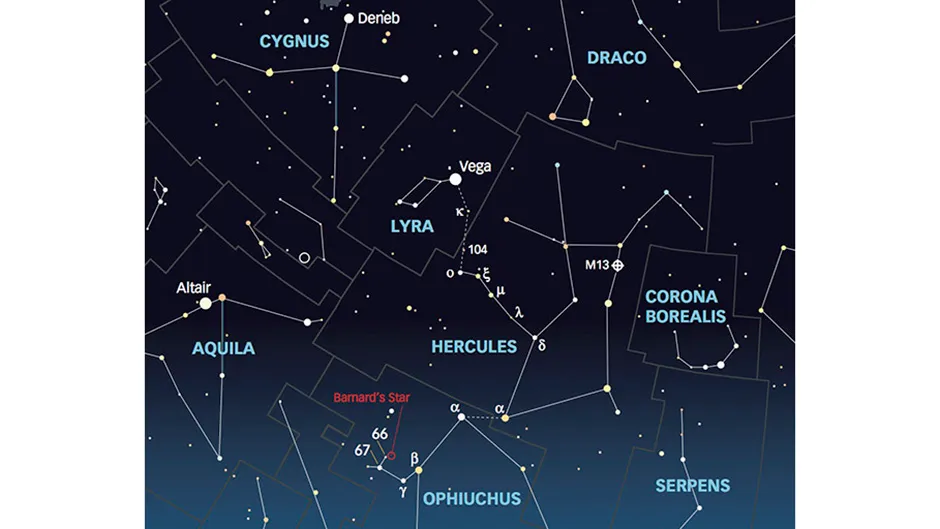
Our next stop is unusual in that’s its just a star. Located 3.5˚ east of Cebalrai and 0.7˚ west-northwest of mag. +4.8 66 Ophiuchi, is mag. +9.5 HIP 87937. This is Barnard’s Star, named after its discoverer EE Barnard, who identified it in 1916.
It’s a neighbour of the Sun at a distance of 6 lightyears. It shows the largest ‘proper motion’ of any of the night-time stars. This term describes the apparent movement of a star against the stellar background. In the case of Barnard’s Star it’s 10.4 arcseconds per year.
5 – M14
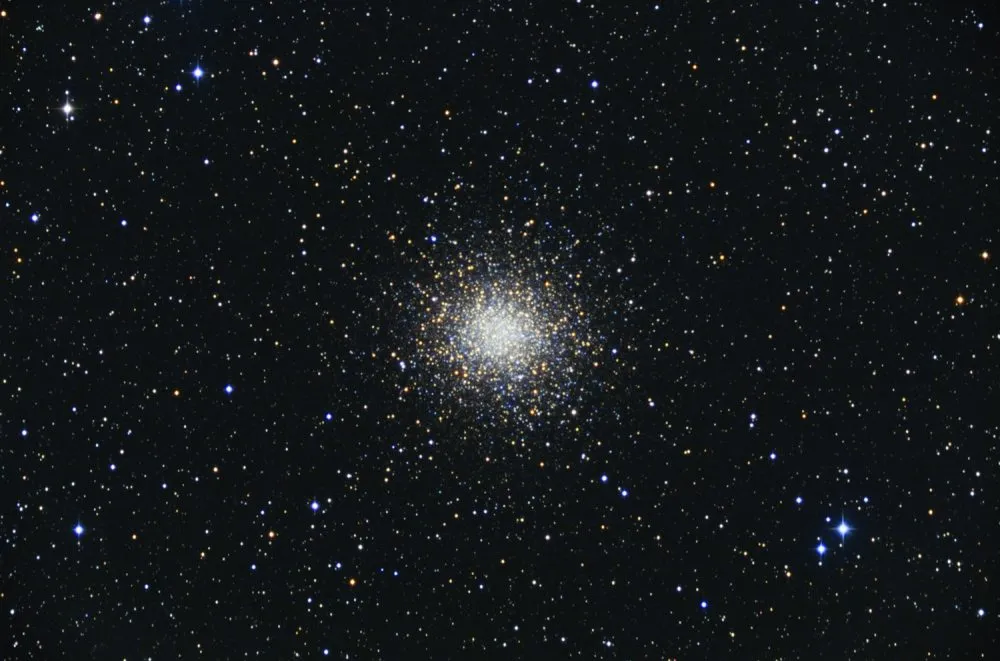
Head 7.5˚ south of Cebalrai and nudge 2˚ west to find our next target, globular cluster M14. Shining with an integrated magnitude of +7.6, this Messier Catalogue globular appears large through the eyepiece of a 150mm scope. Using a high power with a 150mm scope just starts to reveal some granularity in the globular’s texture.
Larger apertures will show that the globular is slightly elongated in a northeast-southwest orientation. Above 250mm a few resolved stars may be seen, but even a 300mm struggles to show much more than just a few stars spread over an area 9 arcminutes across.
6 – NGC 6366
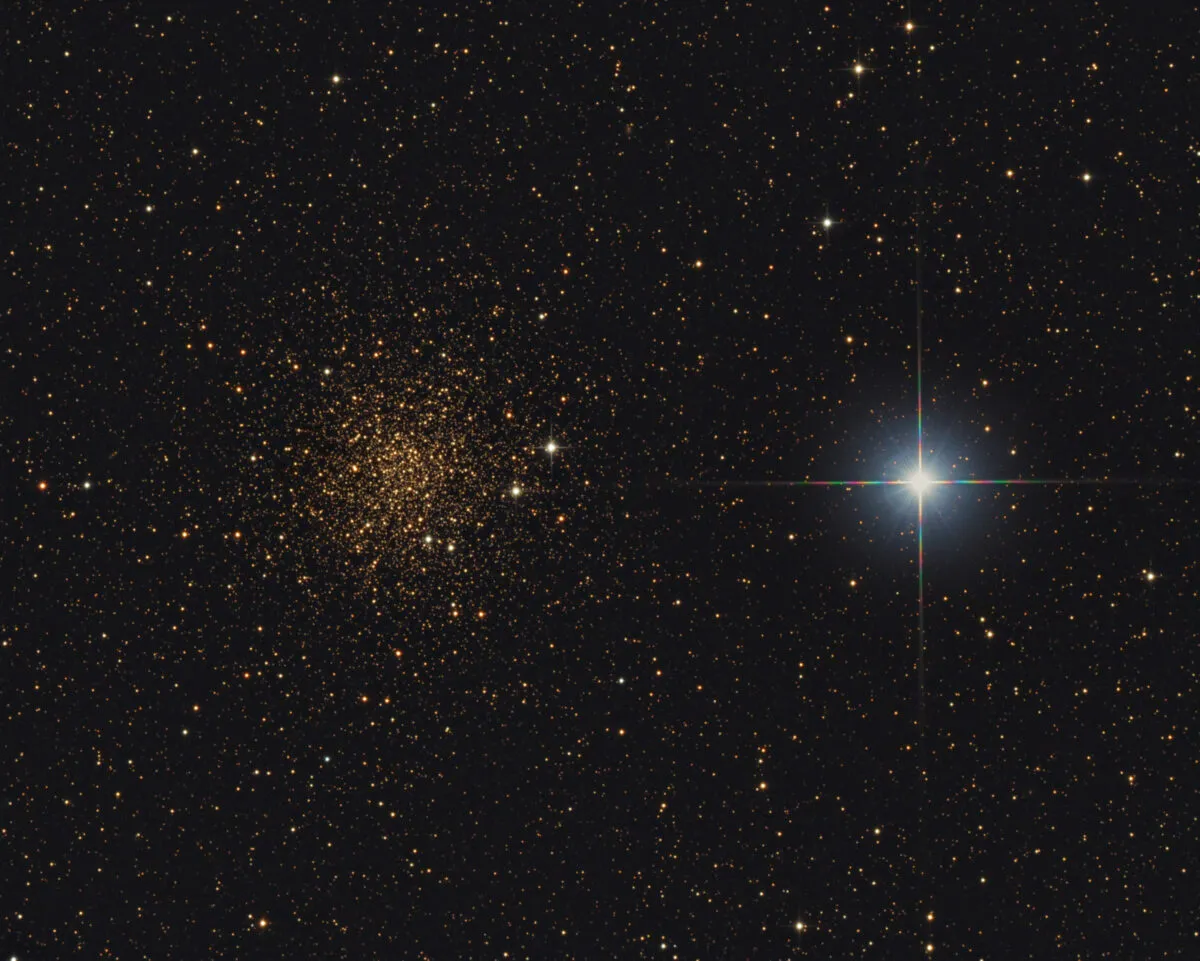
Globular cluster NGC 6366 is easy to locate as it sits 16 arcminutes to the east of mag. +4.5 HIP 85365. This globular responds favourably to aperture, although at the lower end you probably won’t see a great deal more than a featureless glow with no central condensation nor any resolved stars.
A pair of tenth magnitude stars sit on the HIP 85365 side of the globular and there’s a closer pair of 12th magnitude stars on its southern side. By using an aperture of 250mm, it’s possible to see a few resolved stars scattered over a 4-arcminute area. A 300mm aperture increases the number of faint stars as well as extending the area over which they are seen to around 8 arcminutes.
This guide originally appeared in the June 2022 issue of BBC Sky at Night Magazine.
Click here to read more about one of Ophiuchus' other stars, Sabik

